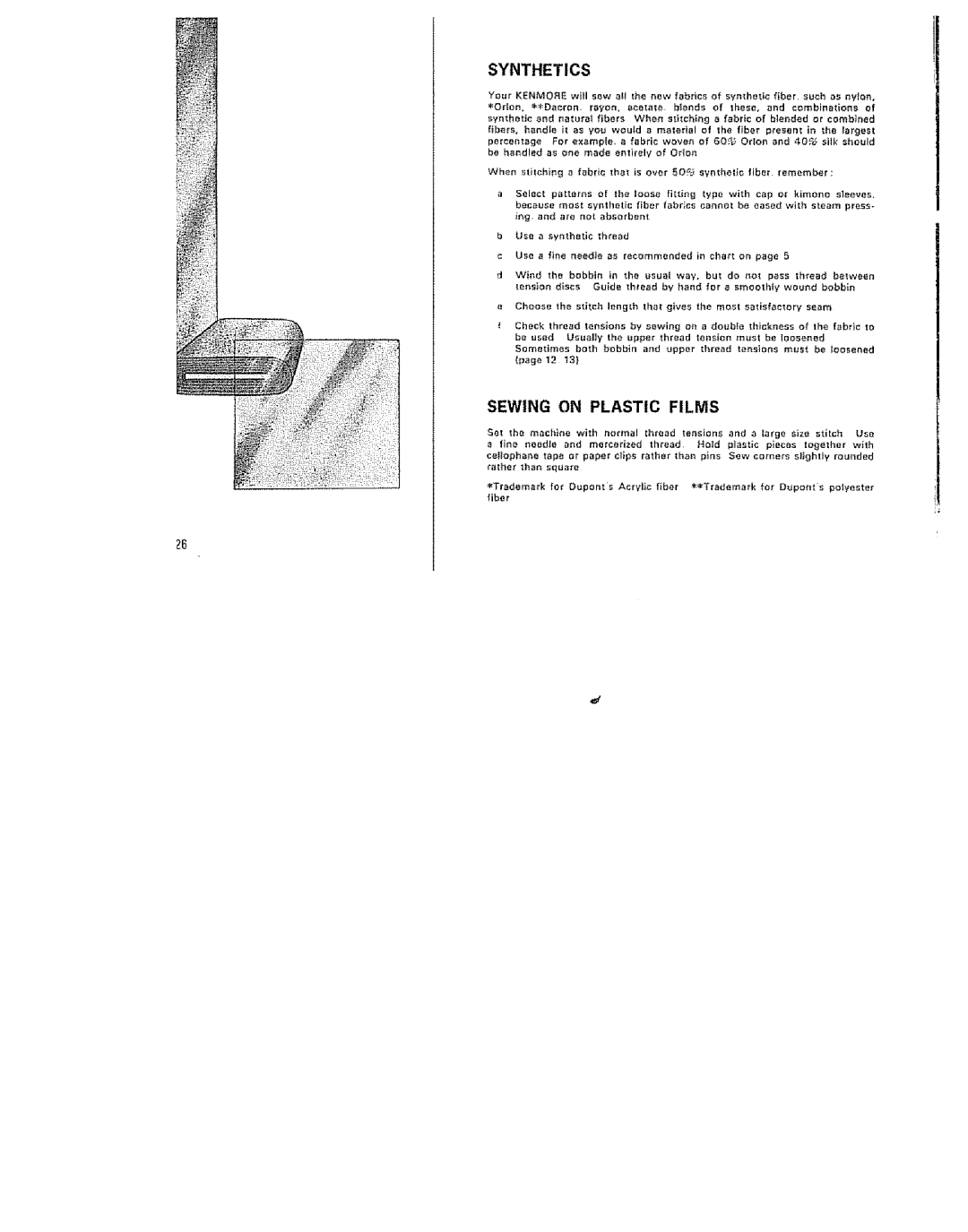
SYNTHETICS
Your KENMORE will sew all the now fabrics of synthetic fiber, such as nylon,
•Orlon, _*Daoron. rayon, acetate blends of these, and combinations of
synthetic and natural fibers When stitching a f_bric of blended or combined
fibers, handle it as you would a material of the fiber present in the largest
percentage For exampie, a fabric woven of 60¢.;- Orion and 40£6 silk should
be handled as one made entirely of Orlon
When stitching a fabric that is over
Select patterns of the loose fitting type with cap or kimono sleeves.
because most synthetic fiber fabrics cannot be eased with steam press- ing and are not absorbent
bUse a synthetic thread
cUse a fine needle as recommended in chart on page 5
dWind the bobbin in the usual way, but do not pass thread between
tension discs Guide thread by hand for a smoothly wound bobbin
Choose the stitch leng_b that gives the most satisfactory seam
Check thread tensions by sewing on a double thickness of the fabric Io
be used Usually the upper thread tension must be loosened
Sometimes both bobbin and upper thread tensions must be Ioosenad (page 12 13)
SEWING | ON | PLASTIC | FILMS |
|
|
|
| |||||
Sot | the | machine | with | normal | thread |
| tensions | and | a fargo | size stitch | Use | |
a | fine | needle | and | mercerized | thread | Hold | plastic | pieces | together | with | ||
cellophane | tape or paper clips | rather |
| than pins | Sew | corners | slightly | rounded | ||||
rather | than | square |
|
|
|
|
|
|
|
| ||
*Trademark for Dopant s Acrylic fiber _*Tradernark for Dopant s potyeste_ fiber
